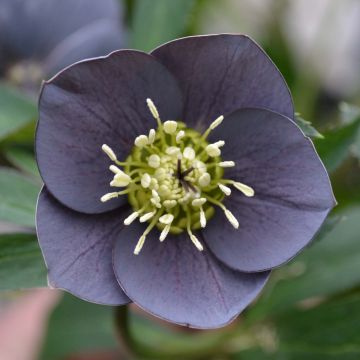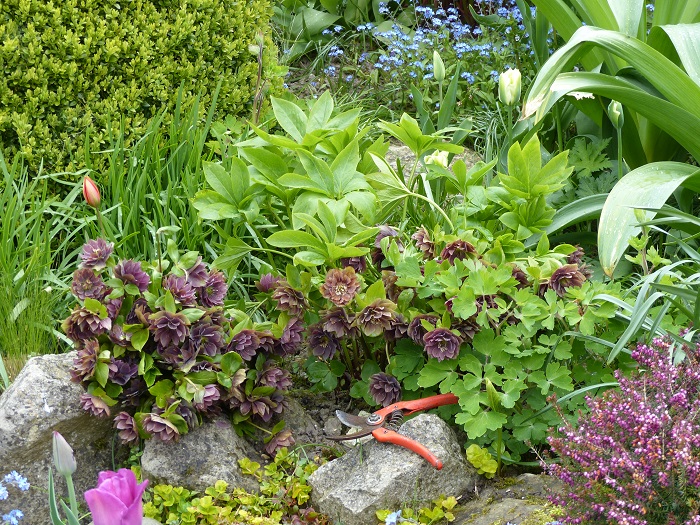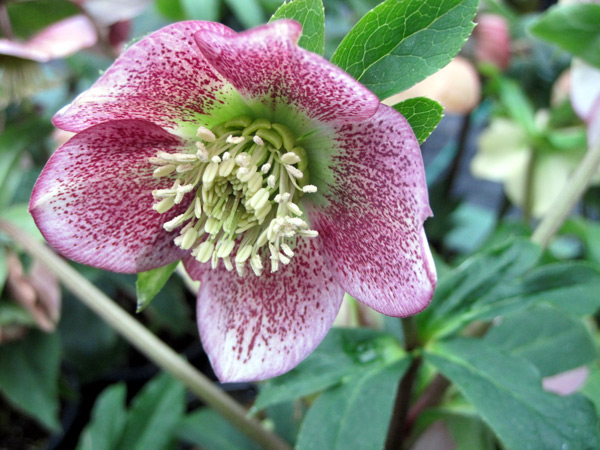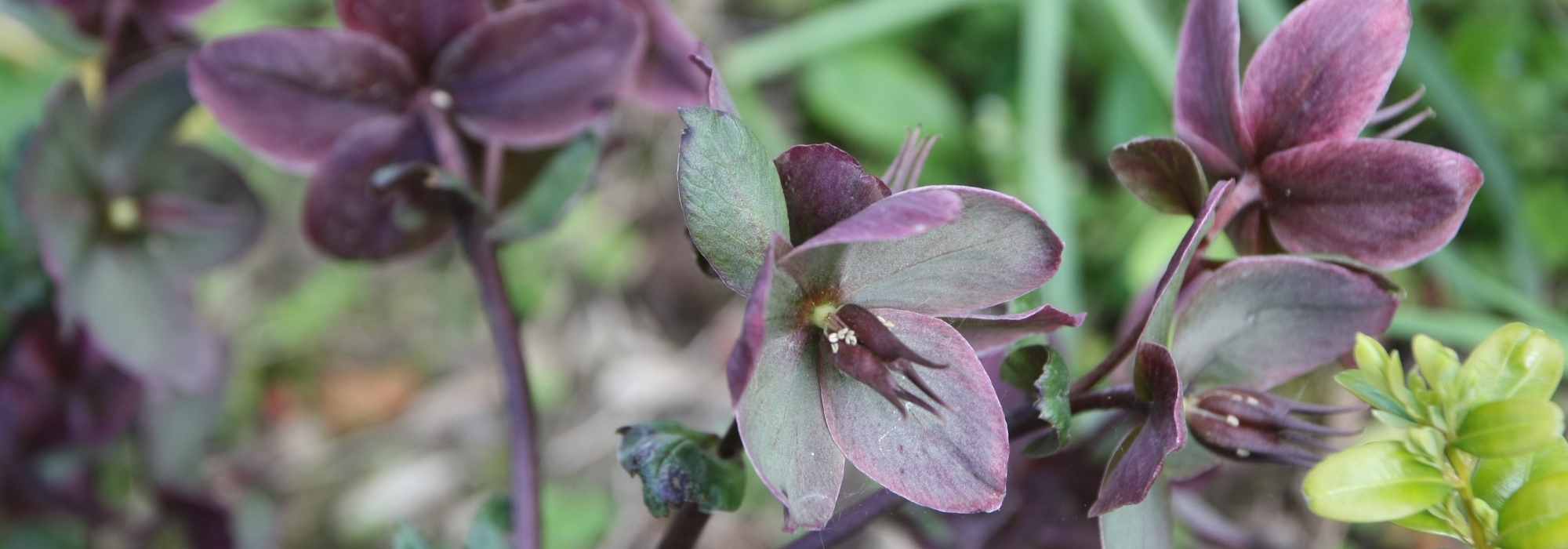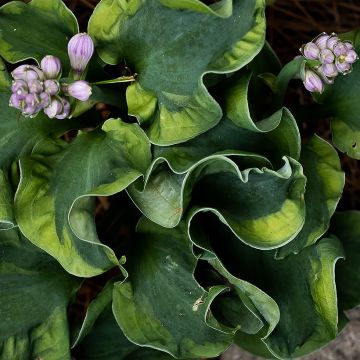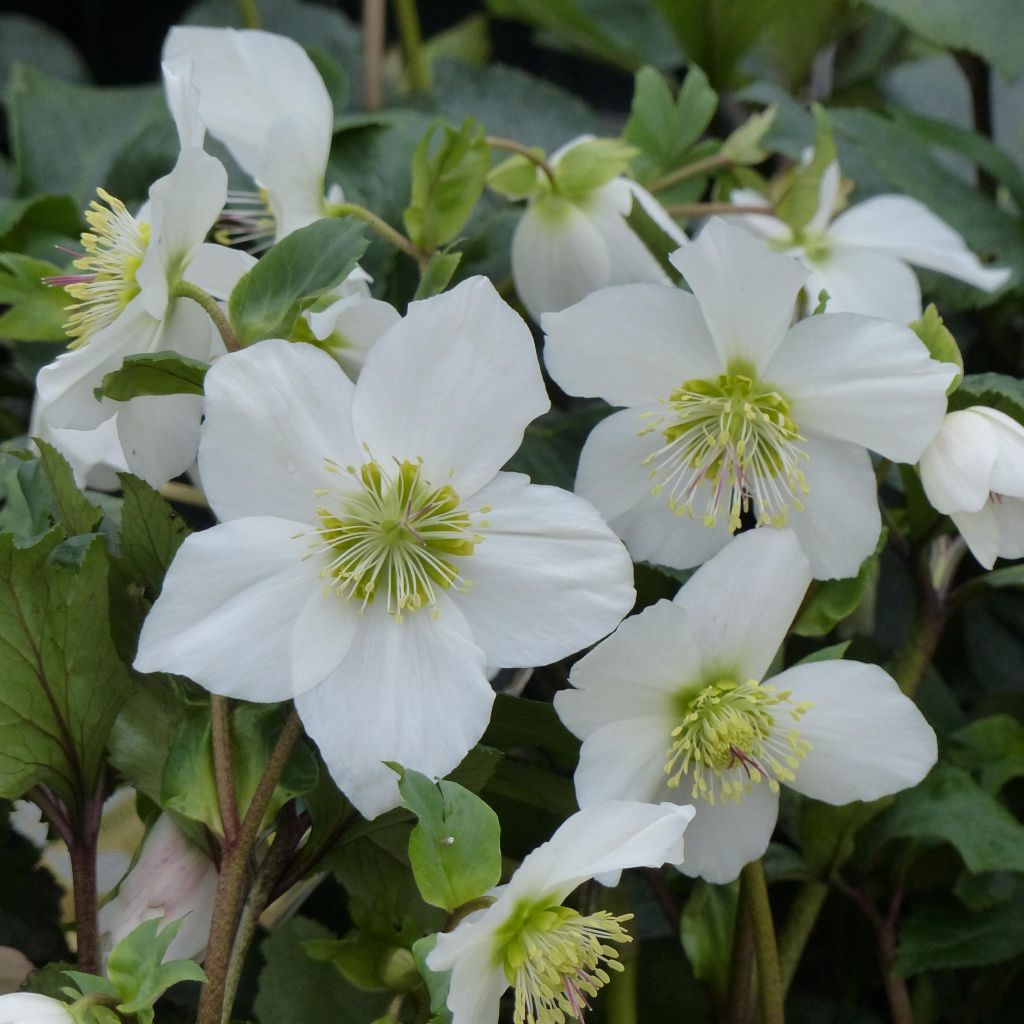

Helleborus x lemonnierae 'HGC Paradenia'


Hellébore Paradenia - Helleborus x lemonnieriae
Helleborus x lemonnierae 'HGC Paradenia'
Helleborus x lemonnieriae HGC Paradenia
Helleborus 'Gold Collection Paradenia', Hybrid lenten rose 'HGC Paradenia', Hybrid Christmas rose 'HGC Paradenia'
I received my Paradenia Hellebore in very good condition. The young plant is not as sturdy as 'Mme Lemonnier', but it still has a beautiful open flower, stunning with its pure white contrasting with the purple of the delicate pistils, as well as another tiller of flower buds. These new cultivars look very promising, and I can't wait to see them well established and covered in flowers.
kevin, 23/01/2017
Special offer!
Receive a €20 voucher for any order over €90 (excluding delivery costs, credit notes, and plastic-free options)!
1- Add your favorite plants to your cart.
2- Once you have reached €90, confirm your order (you can even choose the delivery date!).
3- As soon as your order is shipped, you will receive an email containing your voucher code, valid for 3 months (90 days).
Your voucher is unique and can only be used once, for any order with a minimum value of €20, excluding delivery costs.
Can be combined with other current offers, non-divisible and non-refundable.
Why not try an alternative variety in stock?
View all →This plant carries a 12 months recovery warranty
More information
We guarantee the quality of our plants for a full growing cycle, and will replace at our expense any plant that fails to recover under normal climatic and planting conditions.

Would this plant suit my garden?
Set up your Plantfit profile →
Description
The Helleborus x lemonnieriae 'HGC Paradenia' is a beautiful recent French creation, which seduces with its long and abundant winter flowering, in the form of very large single white flowers held above a beautiful dark green evergreen foliage. This robust and very hardy perennial also has good ground cover capability. It can be grown in borders, under shrubs, mixed borders, as well as in pots. Easy to grow in all regions, even in heavy and chalky soil, it thrives in shade or non-burning sun. Its flowers are very beautiful and precious in winter bouquets.
The Helleborus x lemonnieriae is a herbaceous perennial plant of hybrid origin belonging to the Ranunculaceae family. The 'Paradenia' variety forms a clump 30 cm (12in) high and spreading at least 50 cm (20in), much more over the years. This variety stands out for its long-lasting continuous flowering, which starts in January and lasts until March. Its flowers, produced abundantly, proudly stand abovebeautiful dark and glossy foliage, offering their yellow stamen hearts to the eye. They are composed of 5 white petals barely tinged with green at the base, rounded, arranged in an open cup. The foliage consists of palmate basal leaves, slightly dentate, dark green and shiny. These are evergreen leaves 30 to 40 cm (12 to 16in) long, composed of 7 to 9 leaflets. They actually only live for 8 months and are regularly replaced by new leaves. The Hellébore does not like to be moved once established, with young shoots taking a while to flower. The seeds are sown by ants.
Use hellebores as elements of an ancient tapestry, mixing them with understory plants in brighter colours. They are beautifully highlighted when planted near pieris, rhododendrons, under conifers and surrounded by primroses, anemones, corydalis or dicentras. You can also accompany them with ferns and shade-loving irises to create a beautiful contrast later in the season. Perfect for cut flowers, plant them in large numbers in borders, beds or containers. Helleborus flowers do not wither over time like most other flowers but dry elegantly.
Helleborus x lemonnierae 'HGC Paradenia' in pictures




Flowering
Foliage
Plant habit
Botanical data
Helleborus
x lemonnieriae
HGC Paradenia
Ranunculaceae
Helleborus 'Gold Collection Paradenia', Hybrid lenten rose 'HGC Paradenia', Hybrid Christmas rose 'HGC Paradenia'
Cultivar or hybrid
Planting and care
The hellebore is a plant that can grow in various soils, including clayey or light soil. It needs partial or light shade and protection from cold and strong winds. When planting, choose a spot between February and April and ensure the soil is rich in organic matter. Use bone meal or another organic fertiliser to promote healthy growth. Water the plants after planting and cover them with mulch. Leave a space of 30 to 40 cm between each plant. Avoid stagnant water, as it may cause the hellebore to rot.
In summer, avoid letting the roots completely dry out. Remove any old or spotted leaves to prevent black spot disease, a fungal disease transmitted by aphids. Remove faded flowers after the seeds have fallen. Hellebores can suffer from grey rot or collar rot when growing conditions are poor and excessively wet.
If planting on a balcony or terrace, use pots 4 to 5 times larger than the plant's size. Hellebores are very hardy and can withstand negative temperatures down to -15 °C (5°F) without suffering, making them suitable for almost all areas. Hellebores are easy to care for and can live for many years.
Planting period
Intended location
Care
Planting & care advice
-
, onOrder confirmed
Reply from on Promesse de fleurs
Similar products
Haven't found what you were looking for?
Hardiness is the lowest winter temperature a plant can endure without suffering serious damage or even dying. However, hardiness is affected by location (a sheltered area, such as a patio), protection (winter cover) and soil type (hardiness is improved by well-drained soil).

Photo Sharing Terms & Conditions
In order to encourage gardeners to interact and share their experiences, Promesse de fleurs offers various media enabling content to be uploaded onto its Site - in particular via the ‘Photo sharing’ module.
The User agrees to refrain from:
- Posting any content that is illegal, prejudicial, insulting, racist, inciteful to hatred, revisionist, contrary to public decency, that infringes on privacy or on the privacy rights of third parties, in particular the publicity rights of persons and goods, intellectual property rights, or the right to privacy.
- Submitting content on behalf of a third party;
- Impersonate the identity of a third party and/or publish any personal information about a third party;
In general, the User undertakes to refrain from any unethical behaviour.
All Content (in particular text, comments, files, images, photos, videos, creative works, etc.), which may be subject to property or intellectual property rights, image or other private rights, shall remain the property of the User, subject to the limited rights granted by the terms of the licence granted by Promesse de fleurs as stated below. Users are at liberty to publish or not to publish such Content on the Site, notably via the ‘Photo Sharing’ facility, and accept that this Content shall be made public and freely accessible, notably on the Internet.
Users further acknowledge, undertake to have ,and guarantee that they hold all necessary rights and permissions to publish such material on the Site, in particular with regard to the legislation in force pertaining to any privacy, property, intellectual property, image, or contractual rights, or rights of any other nature. By publishing such Content on the Site, Users acknowledge accepting full liability as publishers of the Content within the meaning of the law, and grant Promesse de fleurs, free of charge, an inclusive, worldwide licence for the said Content for the entire duration of its publication, including all reproduction, representation, up/downloading, displaying, performing, transmission, and storage rights.
Users also grant permission for their name to be linked to the Content and accept that this link may not always be made available.
By engaging in posting material, Users consent to their Content becoming automatically accessible on the Internet, in particular on other sites and/or blogs and/or web pages of the Promesse de fleurs site, including in particular social pages and the Promesse de fleurs catalogue.
Users may secure the removal of entrusted content free of charge by issuing a simple request via our contact form.
The flowering period indicated on our website applies to countries and regions located in USDA zone 8 (France, the United Kingdom, Ireland, the Netherlands, etc.)
It will vary according to where you live:
- In zones 9 to 10 (Italy, Spain, Greece, etc.), flowering will occur about 2 to 4 weeks earlier.
- In zones 6 to 7 (Germany, Poland, Slovenia, and lower mountainous regions), flowering will be delayed by 2 to 3 weeks.
- In zone 5 (Central Europe, Scandinavia), blooming will be delayed by 3 to 5 weeks.
In temperate climates, pruning of spring-flowering shrubs (forsythia, spireas, etc.) should be done just after flowering.
Pruning of summer-flowering shrubs (Indian Lilac, Perovskia, etc.) can be done in winter or spring.
In cold regions as well as with frost-sensitive plants, avoid pruning too early when severe frosts may still occur.
The planting period indicated on our website applies to countries and regions located in USDA zone 8 (France, United Kingdom, Ireland, Netherlands).
It will vary according to where you live:
- In Mediterranean zones (Marseille, Madrid, Milan, etc.), autumn and winter are the best planting periods.
- In continental zones (Strasbourg, Munich, Vienna, etc.), delay planting by 2 to 3 weeks in spring and bring it forward by 2 to 4 weeks in autumn.
- In mountainous regions (the Alps, Pyrenees, Carpathians, etc.), it is best to plant in late spring (May-June) or late summer (August-September).
The harvesting period indicated on our website applies to countries and regions in USDA zone 8 (France, England, Ireland, the Netherlands).
In colder areas (Scandinavia, Poland, Austria...) fruit and vegetable harvests are likely to be delayed by 3-4 weeks.
In warmer areas (Italy, Spain, Greece, etc.), harvesting will probably take place earlier, depending on weather conditions.
The sowing periods indicated on our website apply to countries and regions within USDA Zone 8 (France, UK, Ireland, Netherlands).
In colder areas (Scandinavia, Poland, Austria...), delay any outdoor sowing by 3-4 weeks, or sow under glass.
In warmer climes (Italy, Spain, Greece, etc.), bring outdoor sowing forward by a few weeks.































